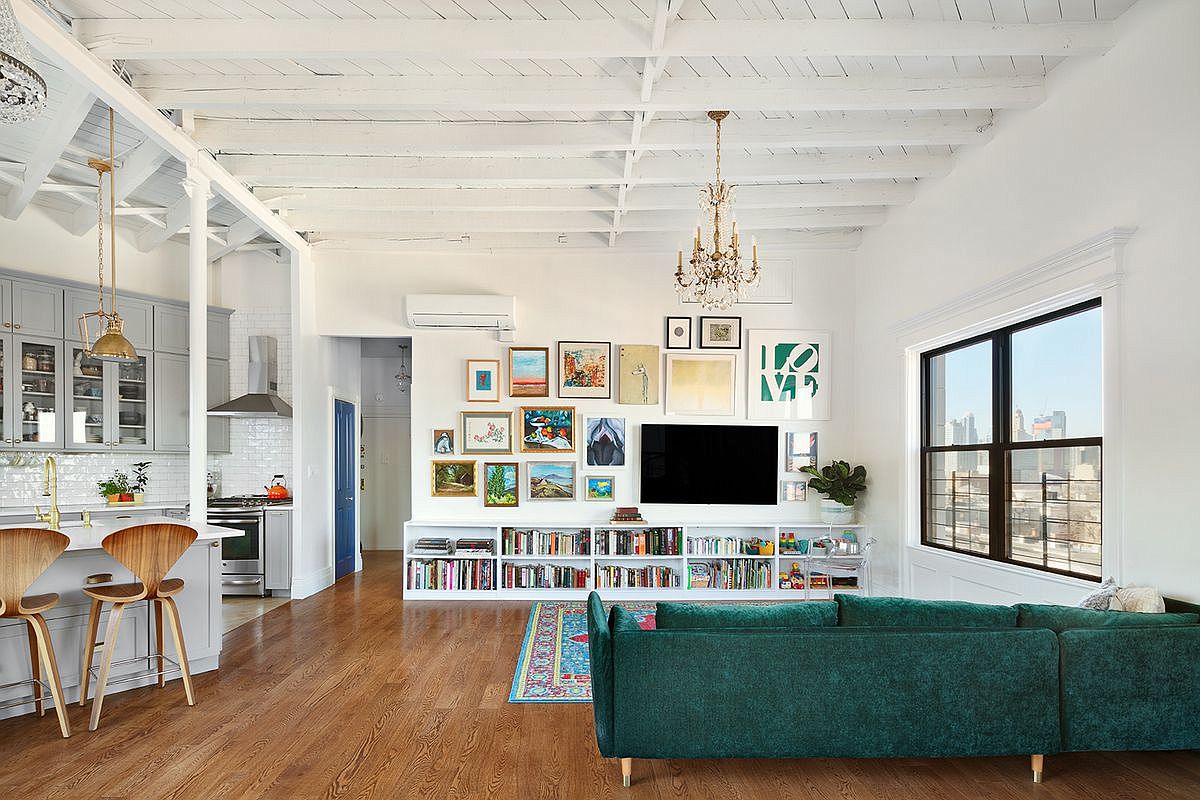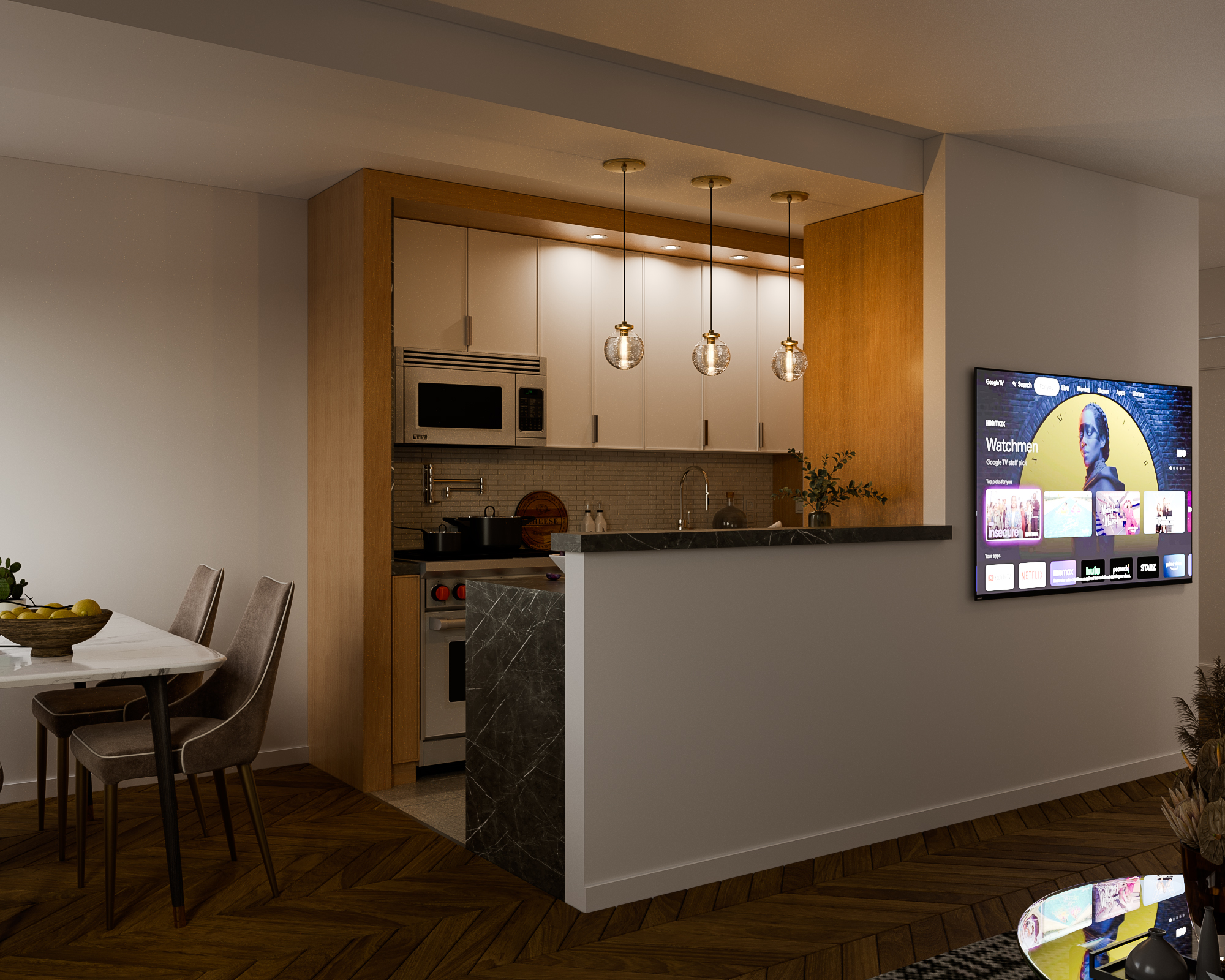Design & Planning Process Of An Apartment Renovation In NYC

NYC RENOVATION GUIDE: DESIGN & PLANNING
This article at a glance:
As a full-service design-build firm, our end-to-end process guides clients through all pre-construction stages of their NYC home renovation, including the most enjoyable - the interior design and planning phase. Pull out those mood boards because now’s the time to manifest.
DESIGN-PLANNING PHASE 1: THE CALL
The process typically kicks off with an introductory phone call. For the firm, this consultation helps frame the full scope of the renovation and obtain necessary context such as property type, location, and renovation vision. The client’s goal is to come away with a more developed view of how the firm operates, who they are, and what their process entails. Equally important for clients and firms alike is to gain an understanding of budgets and timelines.
DESIGN-PLANNING PHASE 2: THE SITE VISIT

The next step is to schedule an on-site visit. When working with a design-build firm like Gallery, a member of our team (usually the designer and/or project manager) will come and take a look at the actual space. They’ll walk through the entire apartment with the client, having in-depth discussions room by room about everything from layout configurations and floor plans to specific design details.
The design and planning phase is naturally very visual, so this is the time we review all visual inspiration from the client, whether that’s project photos on Houzz or color palettes on Pinterest. Anything that provides insight into the desired look or aesthetic for the space is ultra-valuable.
The site visit is also critical for scoping out the appropriate level of allowances per room, which determines the material and finish options required. For example, a bathroom renovation where we’re choosing between porcelain or ceramic will have different allowances than one calling for heated marble floors.
While a big chunk of the meeting is dedicated to understanding the level of finishes and confirming the client’s explicit requests, digging deep into all the ancillary questions is equally important. For instance, is the circuit breaker box big enough to accommodate all the new circuitry? Will there be implications for the walls? Making sure all desired renovations are feasible is another crucial angle of the design and planning phase. At Gallery, we’ll have our electrician come in to make sure the electrical updates are attainable, determine whether there is asbestos testing on site, and all the other tasks we can do upfront to mitigate surprises along the way.
This is one of the key distinctions between a design-build firm and more traditional design-bid-build approaches like working directly with an architect or interior designer, where the feasibility and factors that will impact the design plan are often left to be handled only once the renovation has begun (not ideal as this opens likelihood for unwelcome surprises, delays, and cost overruns).
Since our designers work in tandem with our contractors throughout the renovation, clients who leverage our full-service design-build approach will also find we’re particularly in tune with all the little things they may not immediately focus on but will undoubtedly have an opinion on, such as moldings and millwork. The level of tolerance for imperfections when renovating NYC apartments is different from client to client, but for our designers, no detail is too nuanced to negate.
A note on material selection: This is not true of all firms, but Gallery is brand-agnostic and vendor-agnostic, meaning we’re not limited in any way with our material selections. Some firms or contractors sell their own materials or have relationships with particular vendors, but our commitment is to our clients. We’ll procure from any vendor, whether international or local. This quality makes our ability to design for both taste and budget fairly flexible.
DESIGN-PLANNING PHASE 3: THE PROPOSAL
Once the major design decisions have been made, the next step is for the firm to put together a proposal with a detailed scope of the entire project. A proposal from Gallery typically comes with an all-in number for the total cost of the project. For the sake of transparency, we also include all the finishes and fixture allowances by room: tiles, countertops, plumbing fixtures, flooring, etc.
Next we review the proposal together, which reads like a manuscript for the entire project - start to finish, room by room.
DESIGN-PLANNING PHASE 4: THE DESIGN PLAN
Clients who move forward with Gallery are assigned a project coordinator, as well as a designer/project manager, both of whom will stay for the entirety of their renovation. The designer/project manager is usually the person who did the initial site visit, but at this point the team does start to grow. Once the contract is in place, the more formal design meetings begin, which include measurements, 3-D renderings, and more in-depth material selection.

While the designer/project manager is working on material procurement, the project coordinator is simultaneously handling the board and building management approval process and working on drafting and permits with our architect, if required. You, the client, only need to participate with fun stuff, the formal elements of design, while our team coordinator takes care of all the bureaucratic hassle.
Further along in the process, the project coordinator also inspects all materials and schedules shipments of finishes and items to the project site at appropriate times. At Gallery, we never use the project site as a staging area. Materials are stored in our office location and then shipped to the site when needed.
A note on Gallery’s approach: We work on a stipulated sum contract, which has an all-in price for the entire scope, truly inclusive of everything. If anything arises not already accounted for in the scope, Gallery assumes the costs. This entails everything from extra plumbing work to an additional beam. The pricing won’t budge unless the client requests a change after the fact. This is why we spend so much time on the proposal upfront.
A note on communication: At Gallery, streamlined communication with our clients is so important to us that we’ve invested in technology called JobTracker. A great deal of communication takes place within JobTracker, such as uploading and sharing design options for material selections and daily updates as to what's happening with the building management approval process.
JobTracker is not intended to replace phone calls and emails, but does provide access to selections, daily work logs, and a host of additional information at any given moment.
The design and planning phase of our full-scope design-build apartment renovation is usually complete by the time the building approves the plans. With all the permits secured, your sign-off on the renderings, and materials on their way, we should be ready within two weeks to kick off the construction and project management phase.


.png)
.png)



.jpg)

%20(2).jpg)


.jpg)
%20Gallery%20KBNY.JPG)


